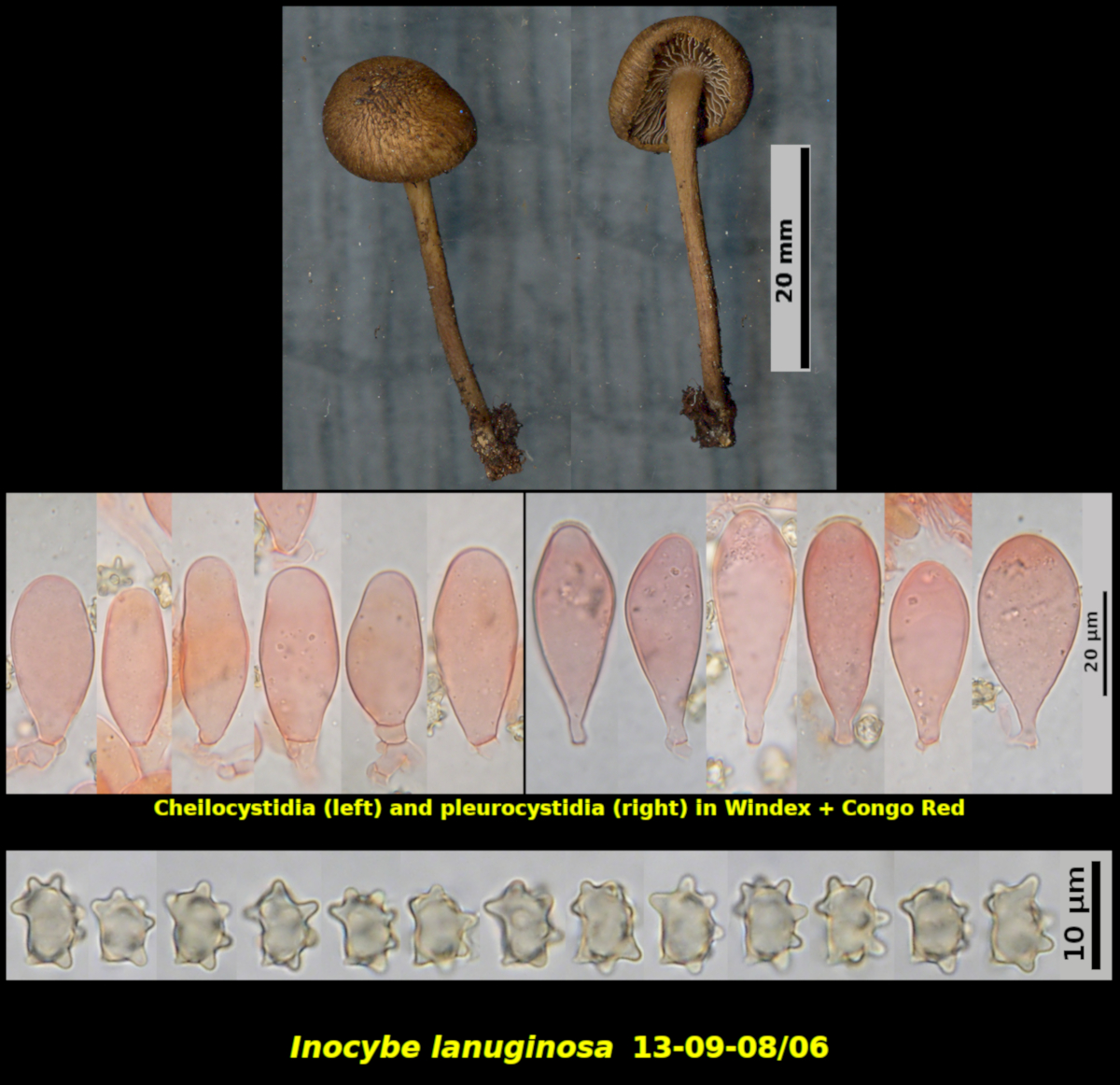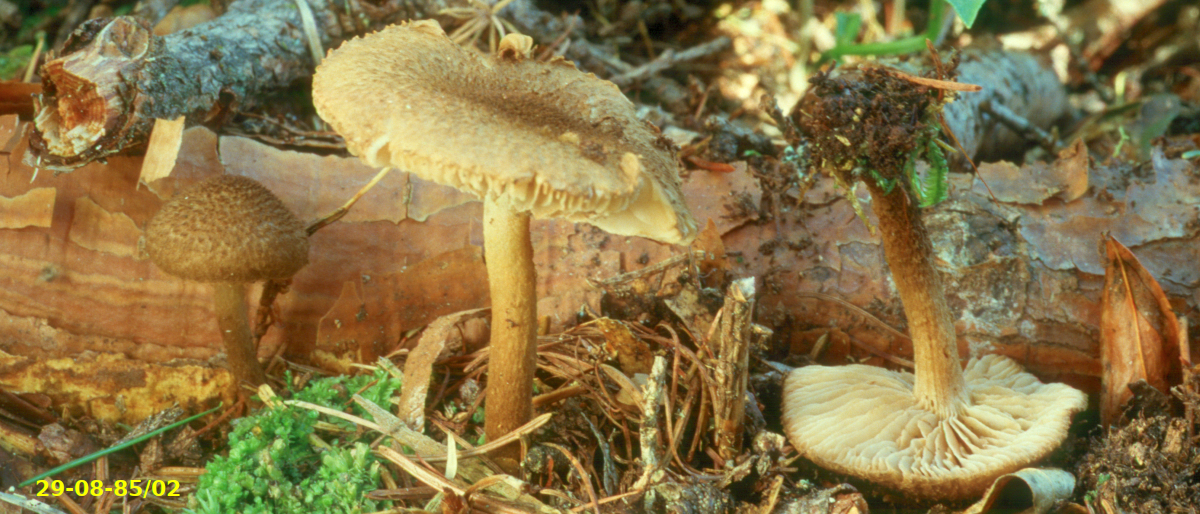Fleshy Fungi of New Brunswick >>
Inocybe lanuginosa
Inocybe lanuginosa (Bull.) P. Kumm.


Three collections:
1. Solitary in duff in association with Picea mariana, Notre Dame Provincial Park, Newfoundland – collected by Alyssa Matthew (Malloch 13-09-08/06).
Pileus convex, without an umbo, dry, finely appressed-fibrillose-scaly, with scales squarrose at centre, Brown to Dark brown (Methuen 6EF4), 13 mm in diameter. Stipe equal, Greyish orange to Brownish orange (5BC3), dry, fibrillose, with a few scales resembling those on the pileus, 34 X 2 mm. Lamellae Brown (6E4), subclose, adnexed, white-marginate. Flesh white to Yellowish white in the pileus, Orange white (5A2) in the stipe, lacking a distinctive odour.
Basidiospores not forming a visible spore print, 7.2-9.7 x 5.9-7.5 μm, Q = 1.09-1.37 (average[33]: 8.5 x 6.9 μm, Q = 1.24). Cheilocystidia abundant and forming a sterile margin, mostly ellipsoidal-ventricose, less commonly sublageniform, thin-walled, with walls up to 0.6 μm thick, 27-37 x 13-16 μm. Pleurocystidia abundant, scattered, broadly clavate, often with a short stipe, thin-walled to having slightly thickened walls, with walls up to 1.4 μm thick, often with a thin apical cap-like structure that appears to be deciduous or to become subgelatinous, 34-44 x 14-20 μm.
2. Gregarious around rotting wood, Navy Island, St. Andrews, New Brunswick (29-08-85/02).
Pileus conic-convex at first, expanding to broadly conic-turbinate and finally nearly plane, with a low broad umbo, dry, prominently scaly (almost squarrose) with blackish scales, dark brown (Methuen 6F4) at first, later brown to dark brown (6EF5), darkest on the umbo, 13-33 mm in diameter. Stipe orange white (5A2) to whitish at the apex, concolorous with the pileus elsewhere, scaly like the cap below although slightly less so, dry, equal, 30-56 x 2.3-3.8 mm. Lamellae greyish orange (5B3) at first, close, adnexed, white-marginate. Cortina brownish, attached near the stipe apex. Flesh nearly white in the pileus, greyish orange (5B3) in the stipe, lacking a distinctive odour and taste.
Basidiospores prominently nodulose with 12-14 fairly sharply conical nodules, typically with 5(-6) nodules in profile and 6 nodules in dorsi-ventral view, with the dorsi-apical nodule more elongated than the ventri-apical one, 8.0-10.0 X 5.9-7.8 X 6.1-7.4 μm. Cheilocystidia abundant and forming a continuous sterile margin, ventricose to lageniform, thin-walled, with a “cap” similar to that of the pleurocystidia, often crystalline at apex, clamped at base, 29-66 X 9-21 μm (>15 μm broad is unusual). Pleurocystidia abundant, ventricose to clavate, thin-walled, with a thin apical “cap” that separates from the main corpus when crushed, occasionally crystalline at apex, clamped at base, 33-41 X 9-17 μm. Pileipellis composed of a repent layer of parallel red-brown, radially encrusted clamped hyphae 3-17 μm in diameter, giving rise to ascending tufts of submoniliform hyphal elements 4-20 μm in diameter (but usually about 8-12 μm in diameter). Caulocystidia confined to the extreme apex of the stipe, clustered, similar to the cheilocystidia but more variable in shape and size, 32-58 X 8-15 μm. Basidia clavate, 4-spored, about 24-28 X 8-9 μm.
The very short and broad cystidia distinguish I. lanuginosa from other species of the genus having squarrose-scaly caps and nodulose basidiospores. There are four other members of this group, distinguishable by the key provided in the page discussing I. stellatospora.
The composite illustrations above are mainly from a collection made in Newfoundland, definitely outside the scope of our New Brunswick checklist. However, at least two collections are known from New Brunswick, one from Kouchibouguac National Park, and one from Navy Island, Just offshore from St. Andrews. The latter collection has not yet been photographed microscopically and can be shown here only as an image digitized from an old 35 mm slide.
Scan: D. Malloch (13-09-08/06).